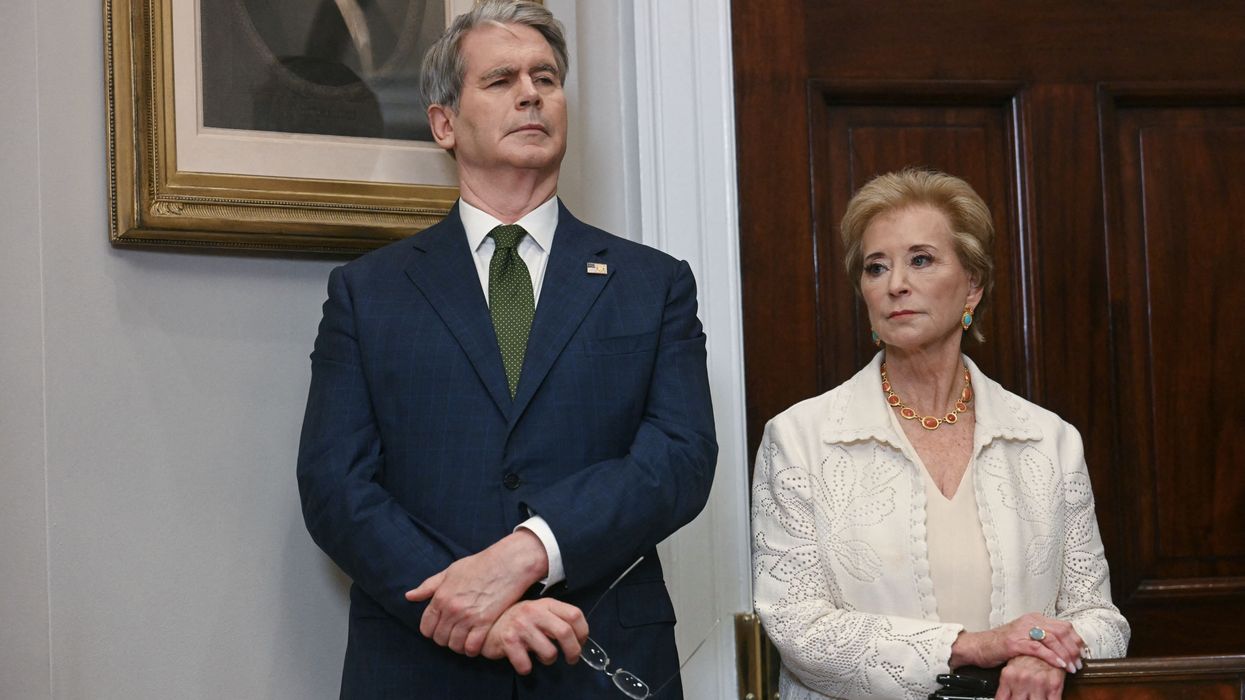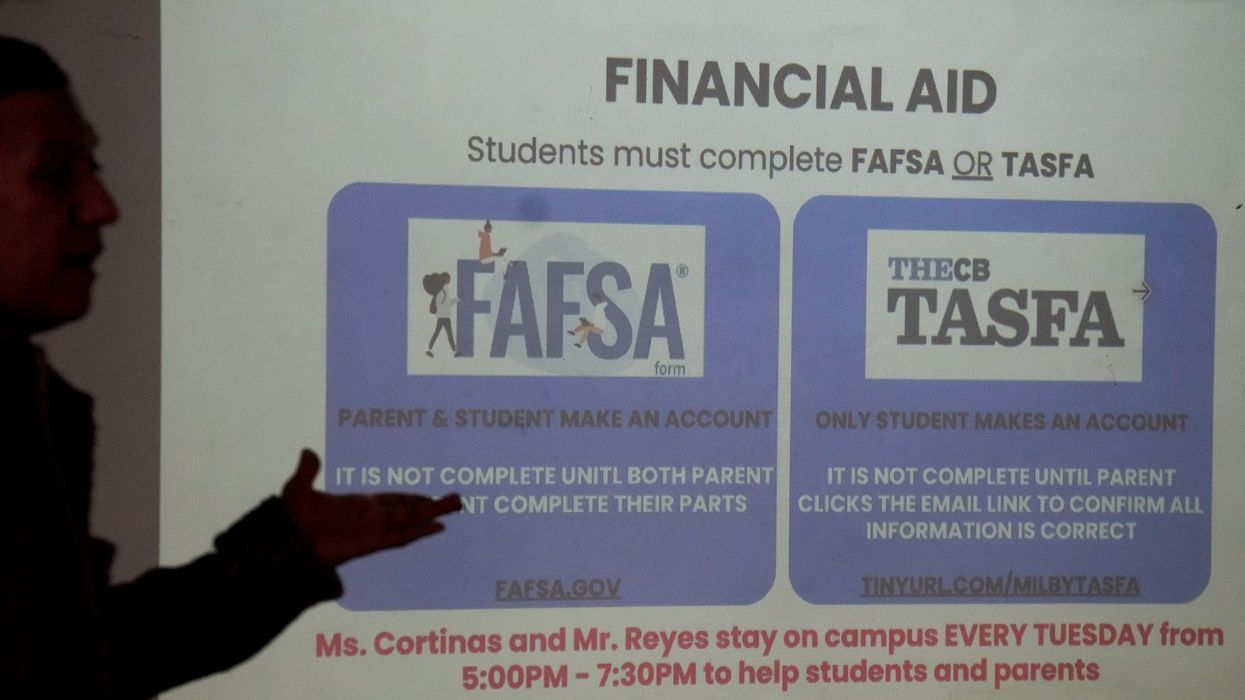For many of my immigrant students, as well as for me, these sacrifices often look like fleeing homes and lands, letting go of the ability to fully express ourselves as we learn a new language, stumbling through years of trying to articulate the depth of our feelings and the texture of our experiences while trying on words that fit awkwardly in our mouths and on our bodies.
We need to do a better job, including the media, in naming this harrowing attack on higher education as an attack on freedom itself.
The City University of New York stands as a beacon against this darkness. Founded in 1847 as the nation's first free public institution of higher education, CUNY's core mission has always been providing first-rate education to all students, regardless of background or financial means. This beacon represents the best of what America can be—a place where education illuminates paths forward for all people, not just those born into privilege.
My students at John Jay College honor these sacrifices with their brilliance and vision. Their degrees aren't just pieces of paper—they are vessels of transformation, tools of liberation forged through years of intellectual courage. According to U.S. News and World Report, John Jay ranks No. 6 nationwide for social mobility (with 6 of the top 10 colleges in that category being City University of New York schools), with 85% of students graduating with zero college debt. These aren't just statistics; they represent real lives being remade, real futures expanding beyond what was once thought possible. In the classroom, in our meetings and research, I witness their world-building every day. They bring vast experience, curiosity, and wisdom from all corners of the world, analyzing problems and creating solutions with remarkable insight that can only come from minds that have been both challenged and nurtured by rigorous education.
This is why it breaks my heart to have conversations with students this semester unlike any I've had before—conversations filled with pain and confusion about their place in our shared reality. When they entered college, they believed they were doing the right thing for their families, communities, and our collective future. But the narrative around higher education has shifted dramatically under the Trump presidency, casting their decisions in a harsh new light—a deliberate attempt to extinguish the very flame of opportunity that has guided generations toward better lives.
This narrative shift is most evident in discussions around student loans. The administration has taken an aggressive stance against anyone with student loans, treating education as a moral failing rather than an investment. These policies represent a direct assault on the founding promise of institutions like CUNY—that education should illuminate paths forward for all people, not just those born into privilege. The light that these institutions have cast for generations is now being deliberately dimmed by those who see education as a commodity rather than a right. During the Biden era, programs like the SAVE plan eased the financial burden of education on middle and lower-income Americans, allowing many of us to meet our financial obligations while paying back our loans. This plan was specifically designed to address racial inequities in student debt, recognizing that Black borrowers typically owe 95% of their original debt even after 20 years, and that Latino borrowers face higher default rates. The SAVE plan was projected to make 85% of community college borrowers debt-free within 10 years—directly benefiting the diverse student populations at institutions like CUNY. Now, the rhetoric has changed dramatically.
"American taxpayers will no longer be forced to serve as collateral for irresponsible student loan policies," declares Secretary of Education Linda McMahon, while White House Press Secretary Karoline Leavitt insists that "if you take out a loan, you have to pay it back. It's very simple." This simplistic framing attempts to divide us, painting those who sought education as enemies of those who didn't, when in reality, both groups often come from the same middle and working-class backgrounds. Education doesn't make anyone morally superior or inferior—yet this administration aims to create such divisions, further harming those who experience financial precarity.
Even beyond this damaging narrative, my students are entering a world of deep uncertainty. The positions they hoped for—research assistants at institutions, staff at nonprofits—have been decimated by budget cuts instigated by billionaire Elon Musk. Meanwhile, universities themselves are failing students in profound ways.
Our students deserve a government that sees their pursuit of education as admirable, not criminal. They deserve universities that protect them, not betray them.
Some institutions, like Columbia, have abandoned their responsibility to protect students, turning them over to Immigration and Customs Enforcement with little concern for their welfare. In one harrowing account, ICE agents showed up at a Columbia student's apartment, demanding entry without a warrant. Ranjani Srinivasan avoided months—perhaps years—of unlawful detention only because her roommate knew their rights and refused to let agents in without proper documentation. Eventually, Ranjani left the country, her education and dreams interrupted by fear. And she is not alone—countless talented young people from around the world are now choosing not to come here because they cannot trust the United States with their visions and futures. They see the shadows of betrayal, and they're right to reconsider.
Other universities, like those in Ohio state, are dismantling critical programs and criminalizing certain perspectives, erasing entire histories from the classroom. These decisions are not representative of where the public is; for instance, in Ohio the bill banning diversity, equity, and inclusion concepts from the classroom was the most protested-against bill in Ohio history with roughly 1,500 people submitting statements in opposition to it passing and about 30 submitting statements in support. Academic freedom—what makes American universities powerful engines of transformation—is being systematically undermined, with universities complicit in this process. With the graduation season upon us, we are seeing the shape this complicity takes now. On May 14, New York University decided to withhold the diploma of their valedictorian for speaking truth to power—simply mentioning the atrocities taking place in Palestine. This act of courage is exactly what we should hope our students would do when witnessing injustice.
This attack on education is part of a broader assault on public institutions. When billionaires like Musk unravel our public services, they are revealing that this has nothing to do with government efficiency—instead, this too is about a fundamental attack on the infrastructure of democracy itself. This convergence of oligarchic wealth and authoritarian politics threatens not just our government services but our very capacity to exist as a democratic society. Our freedom to thrive—to access education, to expand our minds, to challenge ourselves, to grow beyond our circumstances—hangs in the balance as they attempt to dim the collective light we've worked generations to build.
We need to do a better job, including the media, in naming this harrowing attack on higher education as an attack on freedom itself. Education remains essential to democracy not just as a concept but as a lived practice. Public universities serve as beacons of social mobility in an increasingly unequal landscape. The pursuit of knowledge is not a crime but a fundamental right that must be defended in policy, in funding, and in our national conversation.
Our students deserve a government that sees their pursuit of education as admirable, not criminal. They deserve universities that protect them, not betray them. They deserve a future where their sacrifices and those of their families are honored, not mocked. And they deserve a society that recognizes our collective liberation depends on our commitment to education as a public good—one that we must fight to preserve through voting, through advocacy, and through refusing the narrative that education is merely a private commodity.
To all students who are graduating: I'm so proud of you. All of your ancestors are cheering you on, celebrating you because you really are their wildest dreams coming true. Keep on world-building, even amid everything falling apart. Pick up the pieces and imagine the worlds of collective liberation that you have practiced building in classrooms where you worked across difference, where you learned to turn toward each other rather than away. You won't be alone in this work; we'll be there, right by your side, organizing in solidarity across our differences, just as you've learned to do. The skills of dialogue, of challenging each other with care, of finding common ground while honoring our distinct experiences—these are exactly what we need to rebuild our democratic institutions. Your education has prepared you not just for careers, but for the crucial work of collective action that lies ahead.


